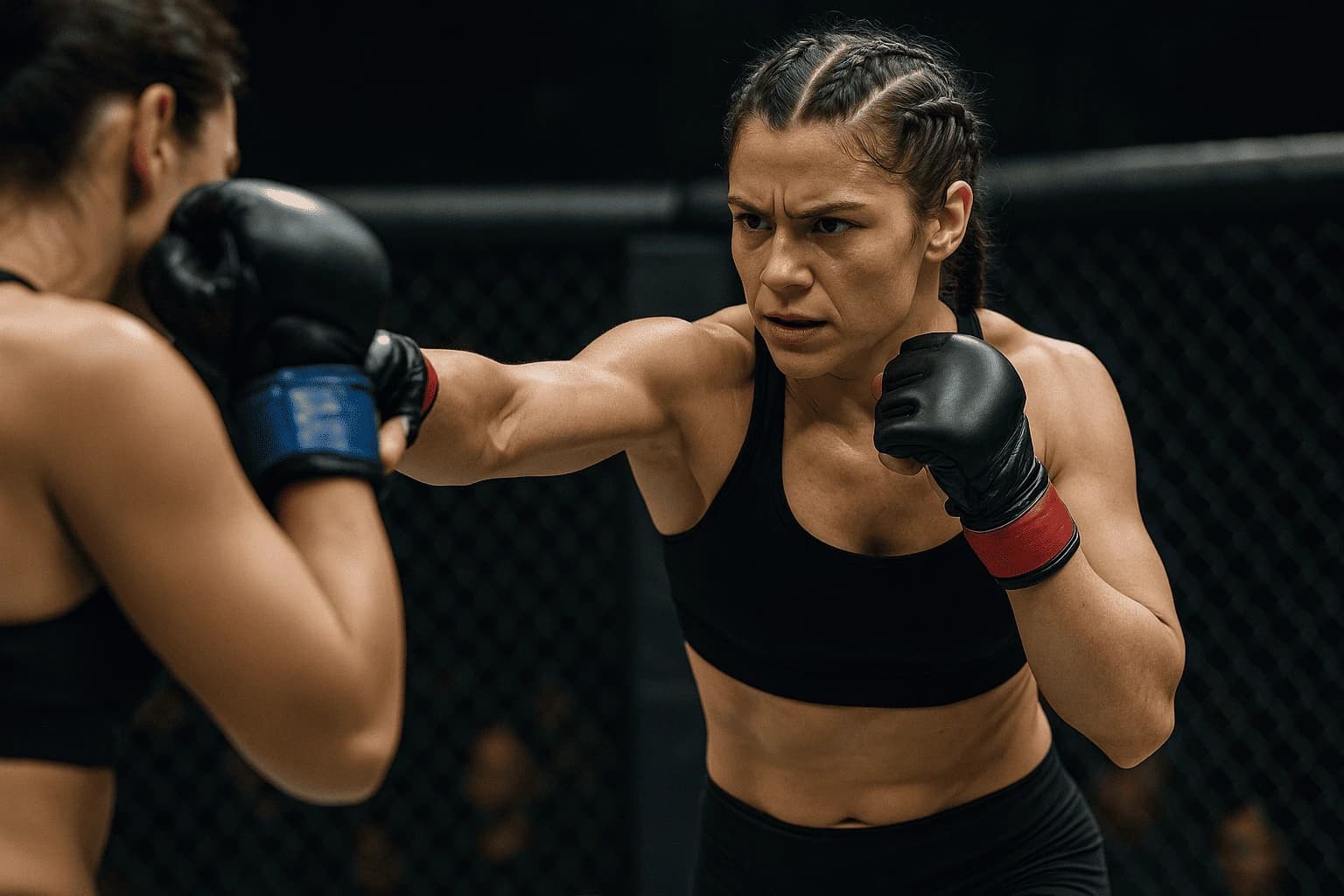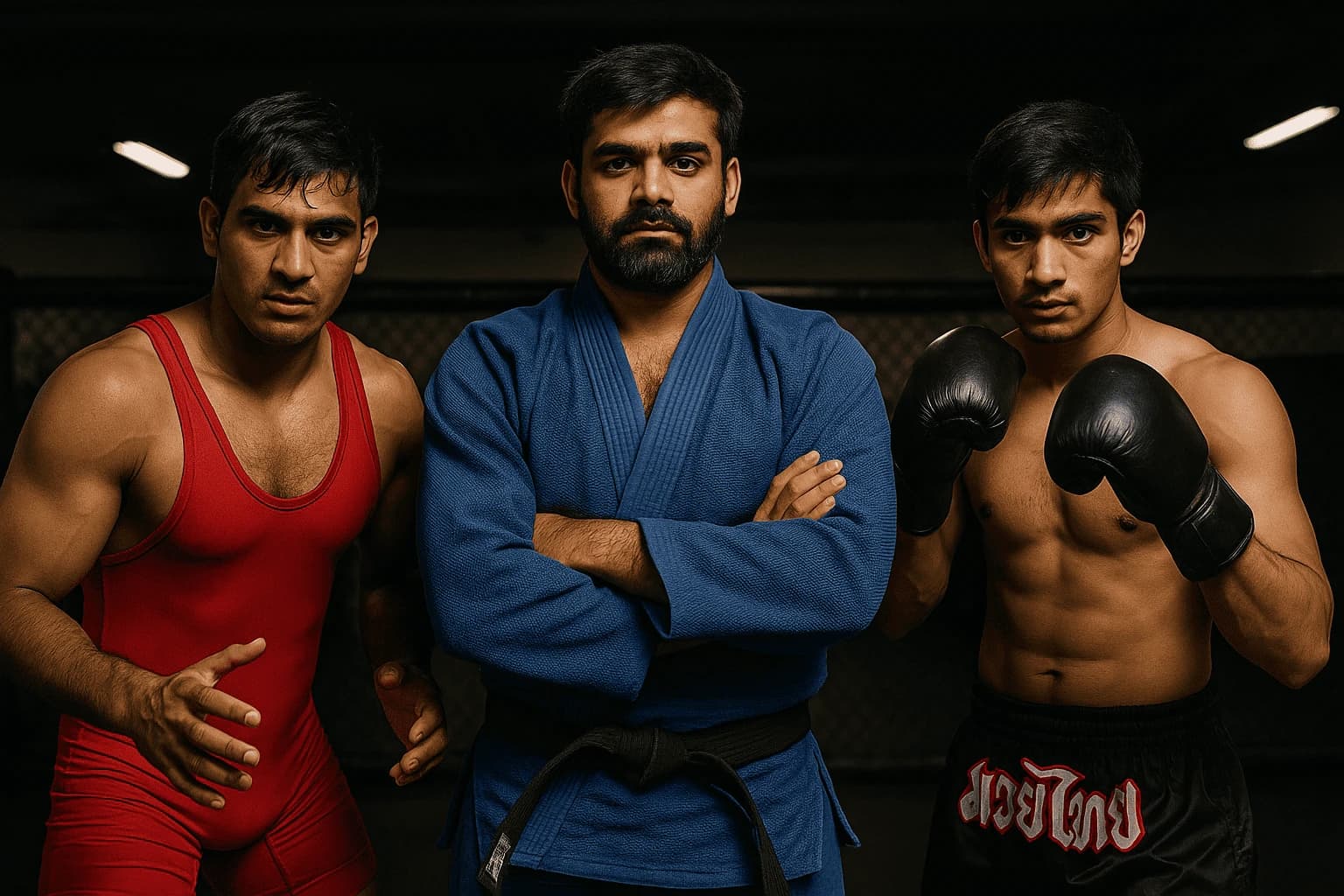© 2025 Info SportsbyTETRA SEVEN

* All product/brand names, logos, and trademarks are property of their respective owners.
In the world of Mixed Martial Arts (MMA), where strength, skill, and strategy come together inside the cage, something powerful is happening in South Asia. A new wave of female fighters is rising and changing the sport in a region where combat sports were once seen as a "man's game." These women are not only fighting opponents inside the cage but also breaking stereotypes outside of it.
From Pakistan to India, Bangladesh to Sri Lanka, and Nepal to Afghanistan — women are training hard, competing with passion, and proving that MMA is for everyone. In this article, we explore how female fighters are transforming MMA in South Asia, what challenges they face, and why their journey matters.
In the early 2000s, MMA was still growing in South Asia, and women’s participation was almost non-existent. The sport was new, and many people didn’t even know what MMA was. Women in countries like Pakistan or Bangladesh faced social pressure, family restrictions, and lack of facilities if they showed any interest in combat sports.
In many communities, the idea of a woman fighting in a cage was seen as strange or even unacceptable. Parents wanted their daughters to become doctors, teachers, or engineers — not fighters.
But slowly, things started to change.
International MMA promotions like UFC, ONE Championship, and BRAVE CF started gaining popularity on South Asian TV screens. Women like Ronda Rousey, Valentina Shevchenko, and Angela Lee inspired young girls across the region. They proved that women could be strong, technical, and successful in MMA.
South Asia saw its first female MMA fighters around the 2010s. These were women who decided to go against the flow and step into the cage even when the odds were against them.
Anita Karim from Hunza, Pakistan, is one of the most famous female MMA fighters in the region. Trained at Fight Fortress, one of Pakistan’s earliest MMA gyms, Anita made headlines when she competed internationally in the ONE Warrior Series. She became a national icon, not just for her wins but for being the first Pakistani woman to enter International MMA competition.
Her nickname “The Arm Collector” comes from her ability to win fights using arm locks. But more than her fighting skills, it’s her courage and confidence that inspire many other girls in Pakistan to take up martial arts.
India has seen more female MMA fighters enter the cage in recent years. One standout name is Puja Tomar, who started with karate and moved into professional MMA. She became the first Indian woman to win a fight in the UFC in 2024, a major milestone for the country.
Puja’s journey wasn’t easy. She faced financial problems, social judgments, and injuries. But she stayed strong and proved herself on the biggest MMA stage in the world.
Earlier, there were very few gyms in South Asia that trained women in MMA. Most combat sports centers focused on male fighters or traditional martial arts like boxing or wrestling. But that’s slowly changing.
Cities like Lahore, Delhi, Dhaka, and Kathmandu now have modern MMA gyms that welcome women. These gyms are providing female-friendly environments where women can learn jiu-jitsu, Muay Thai, wrestling, and boxing.
Some gyms even have female coaches now — an important step because many women are not comfortable training with male trainers, especially in conservative societies.
Examples include:
These gyms are more than just training spaces. They’re also safe communities where women can feel empowered and supported.
While physical training is tough, the mental and emotional battles female fighters face are even harder in South Asia.
In many parts of the region, women are still expected to stay at home, get married early, and follow traditional roles. A woman who chooses to fight in a cage is often judged harshly. Some are called "unfeminine" or even "crazy" for choosing this career path.
Most female fighters in South Asia don’t come from rich families. Their parents often want them to choose safe and stable jobs. Many female fighters have to convince their families again and again that MMA is a serious sport and not just a hobby.
Some women face harassment or discomfort at gyms that are not female-friendly. Others have to travel long distances just to find a gym that allows them to train seriously.
Although the number is growing, there are still very few female MMA stars in the region. Without visible role models, young girls may hesitate to take that first step.
But despite all this, a brave generation of women continues to rise.
Women bring something very special to MMA. Their presence makes the sport more inclusive, diverse, and exciting. Here’s why their impact matters:
More women fighters mean more female fans. Families, especially younger girls, are more likely to watch MMA if they see people like themselves in the cage.
When young girls see fighters like Anita Karim or Puja Tomar on TV or social media, they feel inspired. They learn that strength and courage have no gender.
Female MMA is not just about being symbolic. These fighters are skilled, technical, and competitive. Their fights are exciting and push the sport to grow.
In most South Asian countries, there is little to no support for female fighters from sports federations or governments.
Unlike cricket or Olympic sports, MMA is still considered unofficial in many places. This means that fighters must pay for everything themselves — training, gear, travel, medical expenses — and often don’t get sponsorship.
In Pakistan, MMA is not recognized by the national sports board, which makes it hard for athletes like Anita Karim to get government funding. In India, MMA is growing fast but still lacks proper structure and recognition.
Until female fighters get the same support as male athletes — and as athletes in mainstream sports — it will be tough to see real change.
In the absence of strong official support, social media has become a powerful tool for female fighters.
Instagram, Facebook, and YouTube are full of training videos, fight clips, and motivational stories of South Asian women in MMA. These platforms help them:
Anita Karim, for example, has used her social media to show what daily life is like for a female fighter in Pakistan. It helps people see that MMA is about discipline, respect, and hard work — not just violence.
Thanks to global platforms like BRAVE CF, ONE Championship, and UFC, South Asian female fighters now have a chance to fight on the world stage.
Promotions are starting to look at South Asia as a growing market. They are scouting talent from the region and giving opportunities to female fighters to compete internationally.
For example:
These opportunities not only bring fame and money to the fighters but also inspire more women in their countries to follow their dreams.
While the progress is real, much more needs to be done to support female MMA in South Asia.
Gyms should create dedicated classes for women and hire female coaches where possible. This will make training safer and more welcoming.
MMA should be officially recognized in more countries, with proper support for athletes, especially women.
TV channels and newspapers should give more attention to women’s MMA. The more people hear their stories, the faster mindsets will change.
Brands and companies should step forward and sponsor female fighters. These athletes are role models and can represent brands with pride.
Female fighters face a lot of emotional stress due to societal pressure. Mental health support systems should be built into training environments.
Female MMA fighters in South Asia are not just changing a sport — they are changing mindsets. Every time a woman steps into the cage, she fights not only her opponent but also years of bias, judgment, and limitation.
The journey is not easy. But these fighters are proof that courage, talent, and determination can break any barrier. From the mountains of Hunza to the streets of Delhi, from the gyms of Dhaka to the studios of Colombo, the sound of gloves hitting pads is getting louder.
It’s the sound of change — and it’s coming from women.

15 June 2025
No comments yet. Be the first to comment!